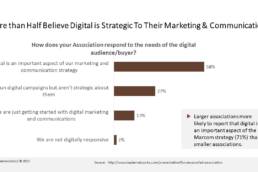Over the past few years, social media has been focused on digital marketing. For many organizations, doing social media means using the online channel as a broadcast platform – a digital megaphone if you will. While this is a start, it doesn’t really represent the true magnitude of a social experience, because it is largely one-sided. Instead, the social experience needs to be a full-circle where online exchanges are actionable and have an operational impact. Listening and doing need to be connected. Now that we are getting more comfortable with digital engagement tools, and the shine is wearing off on “likes” and “thumbs up,” we can start exploring the impact and returns of developing socially integrated organizations.
In our work at Leader Networks, we noticed that companies are starting to discover that the real value of social lies not in marketing alone, but in leveraging the insights that they have gained – both offline and online – to be more responsive to key stakeholders such as current / prospective customers, employees and partners. We were curious to better understand the outcomes of social business on the business.
Therefore, my colleague Peter Ward and I, embarked upon a study called the Social Business Benchmark Project. With the support of The Society of New Communications Research (SNCR), we conducted a study to examine what companies are really doing with their social business activities and to benchmark organizations readiness for social business.
Through this study, we were curious to learn
- Are companies differentiating between social media marketing and social business?
- What is the norm among organizational strategic intent, operational alignment, staffing, policy, and governance structures?
- How are organizations measuring the impact of their social business initiatives? Are they going beyond social media marketing measures to include operational impact factors?
The research is far from over (it is a longitudinal study) but we are thrilled to offer the preliminary findings to date. At the point of writing this benchmark report, there were 75 respondents (we now have well over 175 and continue to grow – the study remains open for participation). The respondents represent a range of industries and company size. For example, 30% of the respondents were from Business Services, 13% Nonprofit, and 12% from the Computer Products industry. 35% have over 50,000 employees and 62% of respondent’s have business models focused on Business-to-Business (B2B).
Findings Highlights
The lines between social media marketing and social business sometimes blur.
52% of benchmark participants differentiate Social Media marketing and Social Business within their organization.
Organizations show greater advancement in social business staffing and governance, but many struggle in the area of strategic intention.
Almost half (44%) report that staff are experimenting with social tools within the organization. And, four in ten respondents report that their organization has a formal written social media policy that has been reviewed by their legal departments.
While strategic vision for social business is strong, implementation sometimes falters.
50% of survey participants report that their organizations have a strategic framework or vision, however, only 38% have integrated social strategy development. 47% report that social strategies are integrated into the larger organizational operations.
Few believe their organizations’ social strategy is being well executed.
When asked “How well is the social strategy being executed within the organization?” 11% reported excellent, 66% reported somewhat well, 7% reported not well, and 16% said we do not have a well articulated strategy.
Social strategy stakeholders are shifting – more operational involvement.
72% of respondents reported that marketing was involved in the development of their social media marketing strategies, and only 50% cited that their social media marketing strategies were led by Marketing. 54% of respondents indicated that key cross-functional teams participated in the development of the social business strategy.
Here are the preliminary findings:
Related Posts
August 28, 2017
SNCR Takes On Fake News
The Conference Board’s SNCR Fellow Community is researching fake news to…
July 20, 2017
Will your association still be here tomorrow? The answer may depend on digital…
With the rise of digital technologies, the potential for associations to reach…


